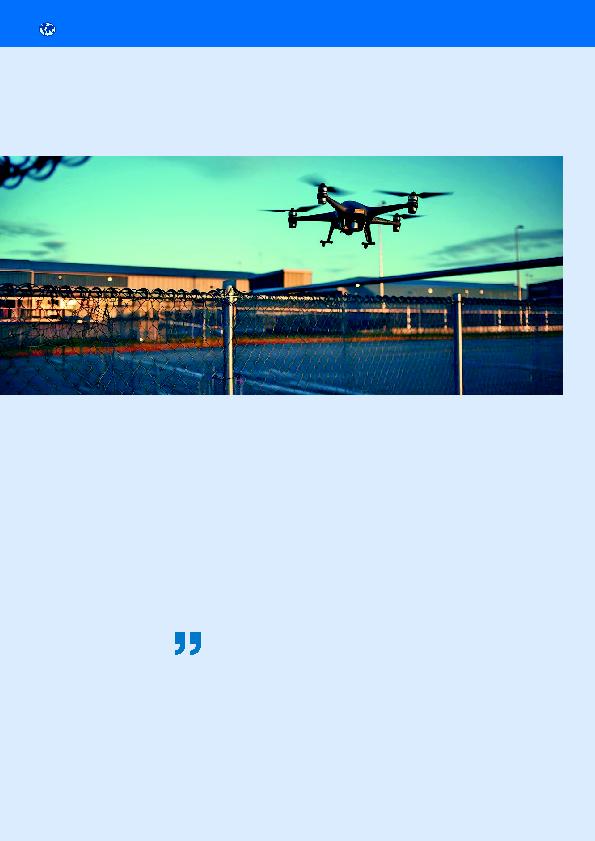
2 2 · d e t e k t o r i n t e r n a t i o n a l
Similar estimates from Global
Market Insight support this
upward trend, with a valuation
of USD 79.8 billion in 2023 and
a compound annual growth rate
exceeding 7% through 2032.
Geopolitical tensions drive
security demand
Geopolitical tensions and rising
terrorist incidents are primary driv-
ers of this market expansion. From
2010 to 2020, global terrorism in-
cidents almost doubled, increasing
from 4,540 to over 8,000 annually,
according to the Global Terrorism
Database. In response, governments
worldwide have ramped up spend-
ing to secure borders and critical
assets, ensuring robust perimeter
protection.
Technological advancements
fuel growth
The perimeter security market is
largely driven by heightened secu-
rity concerns related to terrorism,
criminal activities, and illegal im-
migration. Recent technological
advancements in surveillance and
detection including intelligent
video analytics and biometric sys-
tems are also pushing growth.
These technologies play an es-
sential role in protecting critical
infrastructure across key sectors.
Increased regulatory demands
and the integration of AI and ML
technologies are further enhanc-
ing market potential, making sys-
tems more adaptable and effective
in threat detection and response.
Urbanisation, IoT,
and smart cities
Urbanisation, the development
of smart cities, and the growing
integration of IoT devices are also
driving the perimeter security
market forward. These factors
contribute to enhanced monitor-
ing capabilities, public-private
partnerships, and advancements
in wireless technology and data
analytics, which improve system
scalability and operational ef-
ficiency.
PIDS leading the
way in growth
Perimeter Intrusion Detection
Systems (PIDS) are anticipated to
lead in growth within the perimeter
security market, as the prevalence
of sophisticated security threats
necessitates advanced detection and
response measures. PIDS solutions
employ a range of sensor tech-
nologies radar, Lidar, thermal
imaging, infrared, and vibration
sensors to detect boundary
breaches, often providing real-time
alerts. These systems are widely
implemented in high-security
environments like airports, military
facilities, nuclear plants, and other
critical infrastructure sites.
Enhanced detection
with AI and ML
PIDS technologies are evolving
through the integration of AI and
machine learning, which enables
systems to differentiate between
genuine threats and false alarms
with greater accuracy. As a result,
response times are faster, and over-
all security is more robust.
The impact of stringent
regulatory requirements
The global PIDS market was valued
at around USD 55.5 billion in
2023 and is expected to achieve
a CAGR of 13.4% from 2024 to
2032, reaching approximately USD
140 billion by 2032, according to a
report from Imarc Group.
The global perimeter security market is on a strong
growth trajectory, with projections indicating an
increase from USD 81.4 billion in 2024 to USD 114.2
billion by 2029, representing a healthy compound
anual rate (CAGR) of 7.0%,according to Markets-
andmarkets' latest report.
Geopolitical tensions, AI, and ML drive perimeter security growth
Perimeter security involves protecting an area from intrusions, whether they come from the ground or the air.
Special Feature: Perimeter Surveillance
Urbanisation, the development of
smart cities, and the growing
integration of IoT devices are also driving
the perimeter security market forward."

